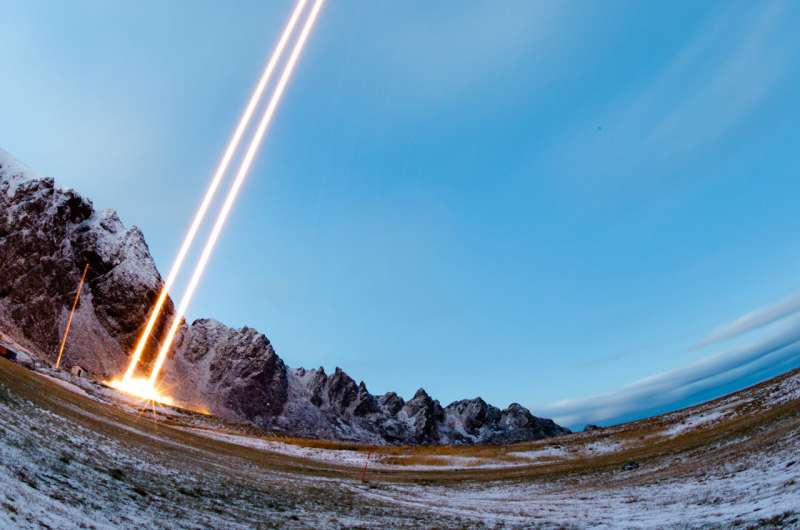This article has been reviewed according to Science X's editorial process and policies. Editors have highlighted the following attributes while ensuring the content's credibility:
fact-checked
peer-reviewed publication
trusted source
proofread
NASA rocket discovers new energization process in upper atmosphere

When it comes to discoveries about our upper atmosphere, it pays to know your surroundings.
Using data from the Twin Rockets to Investigate Cusp Electrodynamics (TRICE-2) rocket launch, NASA scientists Francesca Di Mare and Gregory Howes from the University of Iowa studied waves traveling down Earth's magnetic field lines into the polar atmosphere.
These waves were known to accelerate electrons, which pick up speed as they "surf" along the electric field of the wave. But their effect on ions—a more heterogenous group of positively charged particles, which exist alongside electrons—was unknown.
By estimating the ion mixture they were flying through—predominantly protons and singly charged oxygen ions—the scientists discovered that these waves were accelerating protons as they circle about the Earth's magnetic field lines as well as electrons as they surf the waves. The findings, published in Physical Review Letters, reveal a new way our upper atmosphere is energized.
More information: Francesca Di Mare et al, New Regime of Inertial Alfvén Wave Turbulence in the Auroral Ionosphere, Physical Review Letters (2024). DOI: 10.1103/PhysRevLett.133.045201
Journal information: Physical Review Letters
Provided by NASA





















